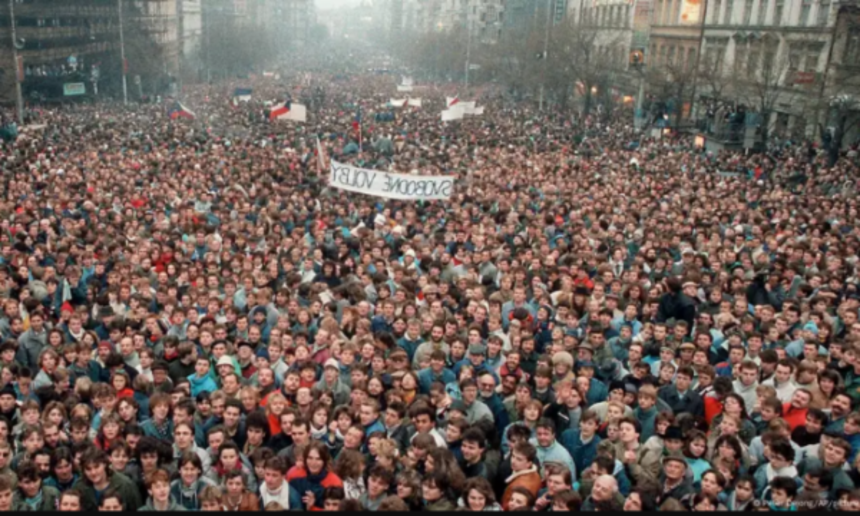On November 24, 1989, mass demonstrations in Prague reached their peak. The peaceful transformation of the political system in Czechoslovakia went down in history as the Velvet Revolution.
With the exception of some violent police interventions, the political system change in Czechoslovakia (which then included both the Czech Republic and Slovakia) occurred peacefully. The Communist Party no longer had the power to resist the will of society through force. The protests of November 17, 1989, in Prague marked the beginning of the non-violent revolution. Czechoslovak students gathered to commemorate Jan Opletal, a student killed by the Nazis in 1939. However, due to the fall of the Berlin Wall just a week earlier, this commemorative event turned into a massive political demonstration. The police intervened violently, using truncheons against the protesters. The result: 600 people injured.
Call for a Strike and the Unification of Citizens
The following day, the students called for an indefinite strike. The communist prime minister of the Czech part of the republic, Frantisek Pitra, tried to calm the situation with a televised speech: “Dear citizens, I am addressing you as the head of the government of the Czech Republic. Two years ago, we began the path of transformation and democratization. Naturally, this is not a fast process. It involves inquiry, discussions, and exchanges of opinions.”
More and more citizens joined the protests, including writer Václav Havel, who had spent five years in prison for his participation in the human rights movement, Charter 77.
On November 24, a massive demonstration took place in Prague, during which the crowd chanted Havel’s name, while communist reformer Alexander Dubček and other activists from the Prague Spring called for the resignation of the entire Political Bureau, which happened shortly thereafter.
The Motto of the Velvet Revolution
“Justice and love must triumph over lies and hatred” – these words of Havel became the central motto of the revolution. However, the communist leadership was still not ready to completely relinquish power. After a general strike and mass protests across the country, on December 5, the barbed wire on the border with Austria was removed. On December 10, a government of national unity, with a non-communist majority, was formed. The momentum for transformation could no longer be stopped.
This article was translated from German and was first published in Albanian on November 17, 2009. /DW







